There’s an old and wise adage that advises one to not change horses in midstream. But if you thought I’d heed its wisdom, you’d be wrong! I had a “Friday Fun” all worked up – but then decided this once in a lifetime (hopefully) record-shattering Polar Vortex needed to be memorialized. So it was back to the drawing board, which is why it’s so late in getting posted.
Plus it gives me a chance to showcase my old stomping grounds of Chicago, which was brutally hit – like much of the country.
But if you thought sub-zero temps with wind chills of -50 degrees – or more – would stop some idiot adolescent from going outside WITHOUT A SHIRT to throw boiling water in the air to have it freeze instantly, you would be wrong.
But it does make for a pretty photo.
JOHNNY CARSON: It was really cold this week.
AUDIENCE: How cold was it?
Cold enough to actually make light poles shiver!
We’ve all seen lots of pictures featuring the record-breaking weather, so I want to focus on some of the unique phenomena peculiar to Chicago. But first, an aerial overview of the city showing Lake Michigan frozen along the shoreline.
WHY ARE THEY BURNING THE TRAIN TRACKS?
Probably the most surprising thing that was covered was the “burning” of the train track – both Amtrak and Metra. But actually this is standard practice when the weather drops below freezing.
As one could imagine, brutal cold weather can wreak havoc on the rails with snow and ice clogging the track switchings that are vital to keep the trains running. The tracks aren’t actually set on fire, as Chicago actually uses a gas-fed system adjacent to the rails to generate heat at its A-2 interlockings – the busiest intersections for switching tracks. Similar to the gas logs you might have in your fireplace.
And fire is also employed to repair “pull-aparts” where the temperature is so cold that it causes the metal to shrink causing the rails to pull apart. In those straight-away locations that are not equipped with gas (or electric) heating they use a rope soaked in kerosene.
The four guys in the orange vest in the slideshow above are working on a pull-apart. You can tell from the black smoke created by the kerosene.
Not to worry – it’s perfectly safe. Not only does at least one staff person stay on hand to monitor the flames, but the diesel fuel trains use combusts only with pressure and heat, not open flames.
The gas-powered heaters are a little old-fashioned and are only used at A-2 intersections – the busiest interlocking sites. That’s because the density of the rails makes it difficult to employ more modern technology. At other locations, electric-powered heating elements and electric-powered hot air blowers are used.
WHAT THE FOG?!?
“Smoke On The Water” … it’s not just the title of a Deep Purple song.
When a very cold air mass moves off the land and blows over the warmer water it creates what’s called “Sea Smoke” or “Sea Fog”. This happens even if Lake Michigan is iced over – that’s because the Polar Vortex produced temperatures that were significantly colder than the ice.
For about the first 25-seconds of this Twitter video you can get a sense of how cold it must be to create the vastness of Sea Fog/Smoke like this.
WATCH: Steam rises off Lake Michigan with outside temperatures in Chicago near -20 degrees. https://t.co/cHqXyCDbBj pic.twitter.com/bkBIgadK3s
— NBC News (@NBCNews) January 31, 2019
KA-BOOM!
I actually experienced an “Ice Quake” on Tuesday – KCMO’s coldest day.
Decades ago Illinois had an earthquake on a Saturday morning when I was in high school that I can still recall. And I felt that again on Tuesday and checked w/ the neighbors who said they felt it, too – accompanied by a loud “BOOM”!
Apparently these “Ice Quake” or “Frost Quakes” were felt across wide swaths of the Midwest on Tuesday and Wednesday.
When temps tumble below zero it can cause a natural phenomenon known as “Cryoseism”. It’s an actual seismic event that happens when there’s enough water in the ground that freezes with super cold temps. This then cause enough expansion (just like the old milk bottles dairy men would leave on our porches in the old days) to crack the frozen soil causing a “quake”.
But enough of the science lessons. Let’s enjoy some of the really odd outcomes of this Polar Vortex visit.
“♫ I’m Forever Blowing Bubbles ♬ … That FREEZE Instantly”
And You Might Have Problems With Your Car – Especially When the Polar Vortex Begins With Freezing Rain
And If Your Car Does Start, Hope You Don’t Get Pulled Over By This Officer
And If You Get Hungry, Do NOT Eat Your Noodles Out On The Balcony
And Lord Help You If You Have To Go To Bathroom
But it also created some beautiful photos, too. So I’ll leave you with my favorite – a flock of geese in a Sea Fog on the lake.
11 Responses to “Friday Fun: A Polar BRRR!”
Sorry, the comment form is closed at this time.
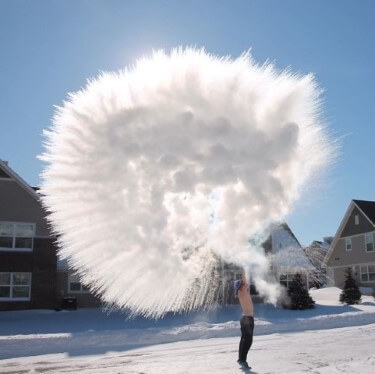
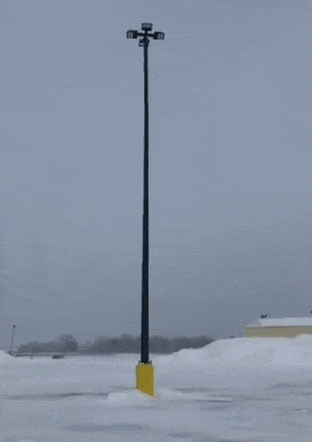
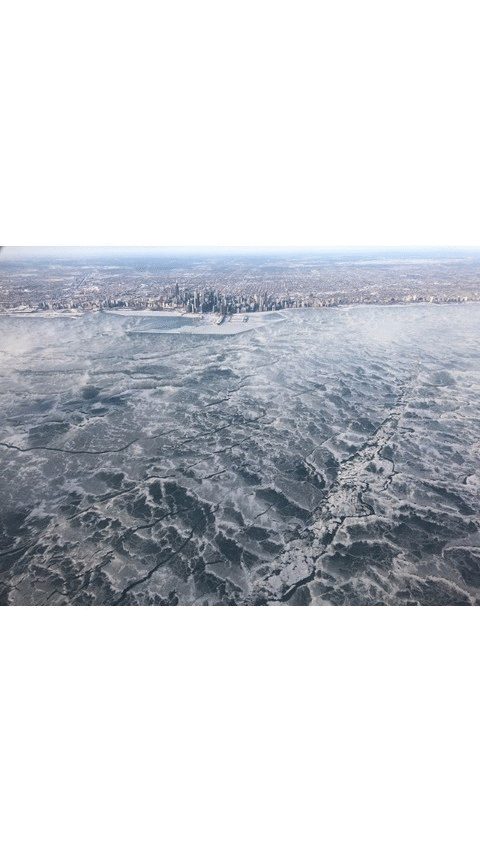
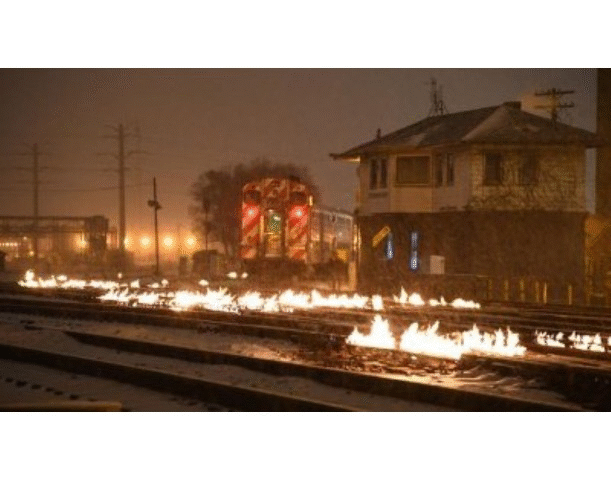
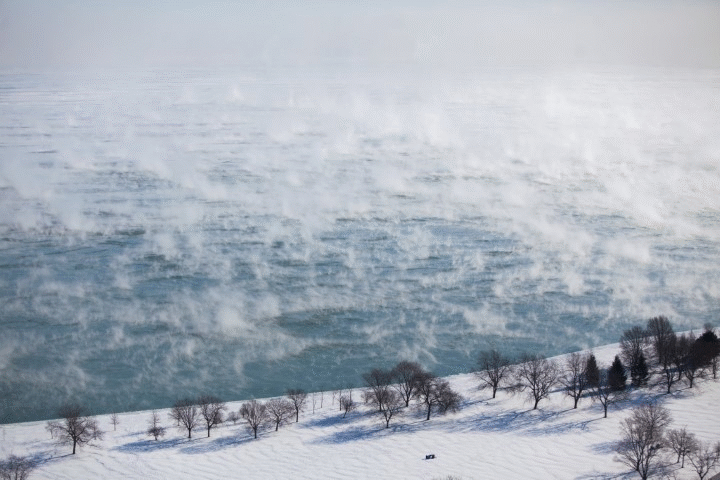
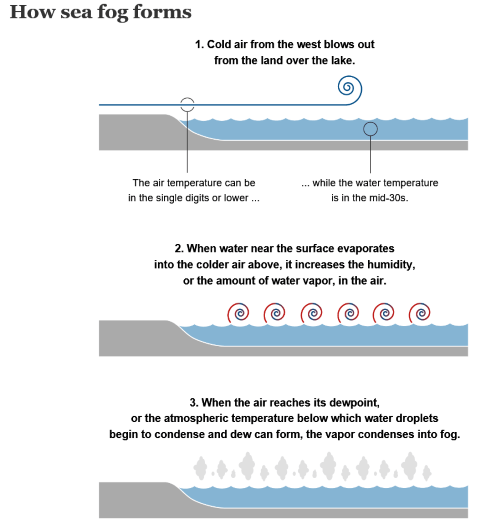
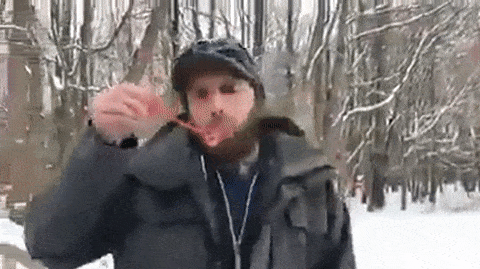
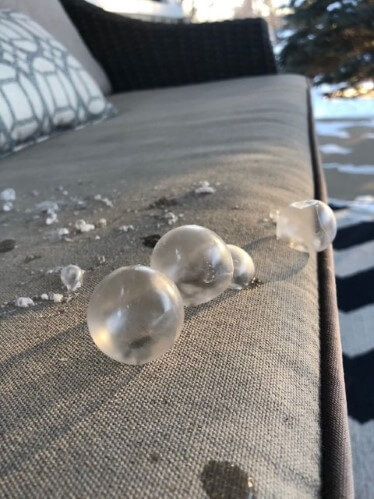
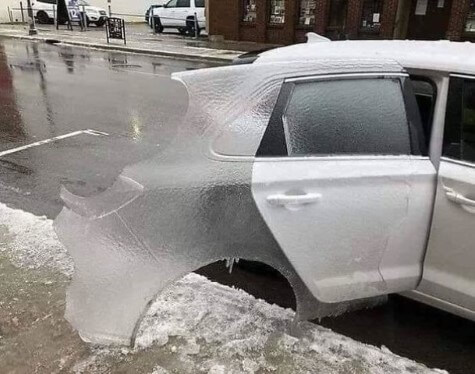
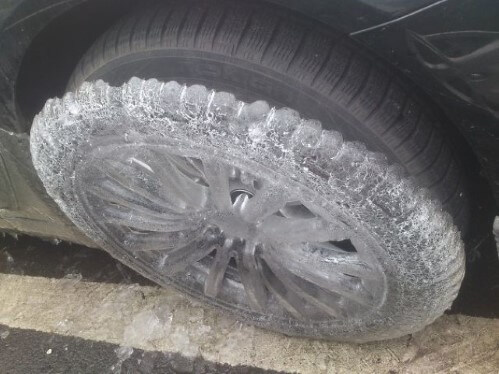
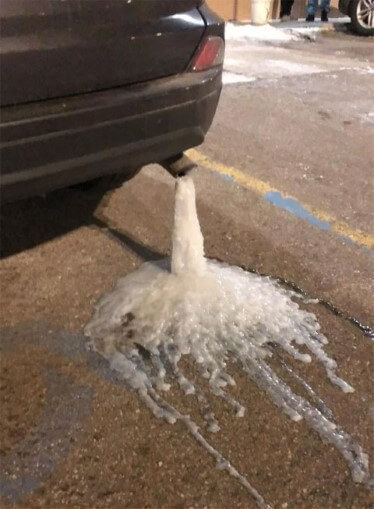
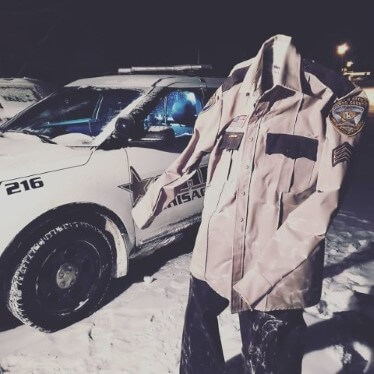

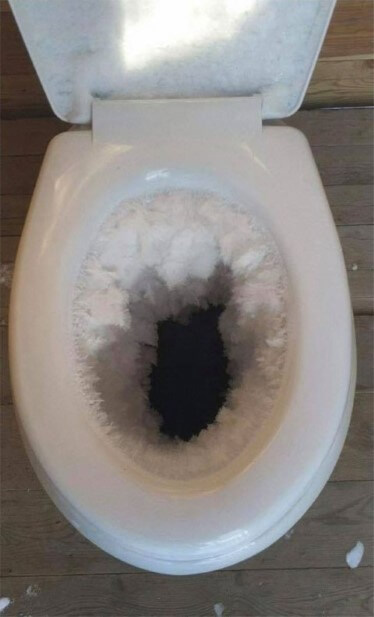
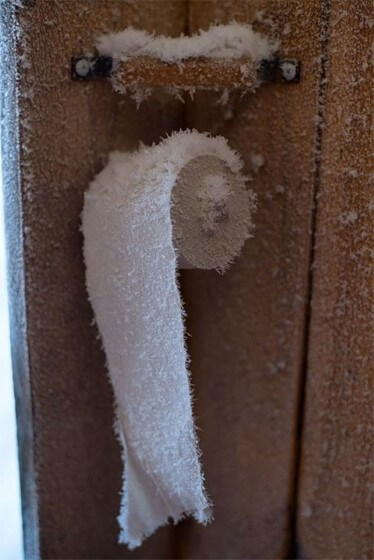
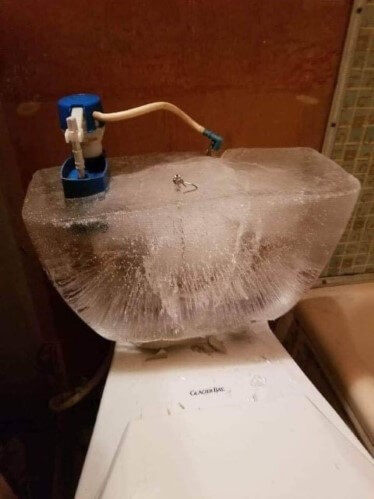
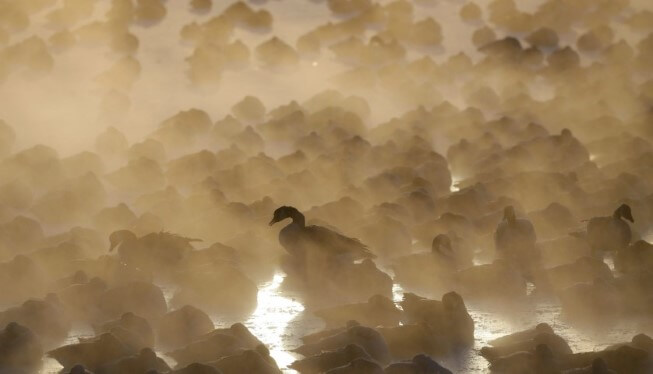

Cross posted to Care2 HERE
I’ve lived through winters where the temperatures got to 40° F below zero, but that was in Alamosa, which is high desert, and the humidity was virtually non-existent. So it really didn’t feel as cold as it was – especially without wind (not that we never had wind, mind you, but we didn’t seem to have it and the 40° F below temperatures at the same time.)
I saw somewhere that it isn’t the Polar Vortex alone which is the culprit, but the fact that it has (temporarily) split. This also happened in 2016, and this journal article may help explain it better than I can.
And then, this picture – I really can’t say more than that it’s suggestive, not being a scientist – but suggestive it is.
Oh, and about the car … don’t expect an engine heater to help you if you need to actually go anywhere. It will help start the vehicle, yes. But it won’t thaw out the fluids spread through the vehicle (like the brakes, for instance.)
Oh my gawd, minus 20F, YIKES !!!!
Frozen noodles, bubbles, cars, cops : ) loos & loo paper OUCH & ARGHHHH i’d be dead!!! ❄️
Actually, i read earlier people & animals have died in this freeze!!!
It’s too cold for me when it goes below 60F !!!
The record low in my State (Minnesota) was 56 below zero in Cotton, Minnesota on Wednesday.
At my house (about 50 miles from the Canadian boarder) the last few nights: 32 below, 28 below, 36 below, 41 below
Physical science changes at those temps.
The temp difference is so great between outside and inside that my doors froze shut and I had to use a hair dryer to unfreeze my house doors.
21 people died in this cold snap.
A heat wave this weekend, it will get to 20 above.
YIKES! Thankful you didn’t have a fire w/ your doors frozen shut.
I lived through the record-breaking ’78/’79 winter while on the family farm. It was BRUTAL!
One of those in a lifetime is enough. Fortunately we lost no cattle, but I shudder to think what ANY sentient creature went through during that winter. It was truly an eye-opening trial.
From a 35 degrees Celcius perspective these are all just phenomenally beautiful photo’s and interesting expatiations of natural phenomena and I thank you kindly for posting them, Nameless. But I am glad I don’t have to live through it.
So take care and stay safe of you live in these cold-struck areas and need to go out. Don’t go out unless it is absolutely necessary.
Family folks living in WI have been having -21 below this past week. Rural area w/farms.
Lived in PA/NJ growing up, my memories of the blizzards were (almost) yearly, and at the time, fun.
A ‘snow day’, yay!! I remember the washed clothes being hung out to ‘dry’, and breaking the ice off of them, as we didn’t have a dryer in the house. I do worry about the homeless and animals being outside, too.
Those ice quakes you mentioned are scary, though I’ve not experienced any. The pictures speak for themselves, enjoyed reading your post, Nameless. Thank you!
ps. I don’t do well in the cold weather, so I’ll stay here in Texas, if you don’t mind…lol
Both entertaining and very informative. Once I had to use an outhouse, when ice fishing in northern Minnesota. I thought my kitty dingles were castanets.
The coldest I have experienced is -75 C (-40C =-40F) for one day while I lived up north. The average winter temp was -40C but as JD said, it does not feel that low because it is so dry. I left for a Christmas holiday in Victoria. It was -45C in the north but +5C in Victoria. I froze the entire time in Victoria. I stepped off the plane at home and it was -50C. I started to warm up!
We used block heaters all the time which were very helpful. Too often car tires were square from the cold. Of course all the car fluids were rated for the cold extremes — windshield fluid was rated to -40C usually.
Great pictures Nameless! I especially like the bubbles! Kids would like those because one might be able to catch them w/o breaking them. Another thing, many people used their barbecues all year so it could be -40C and people would be in and out tending dinner.
That’s right, you can get fluids rated for those temperatures. But a lot of places experiencing this are not ready for it.